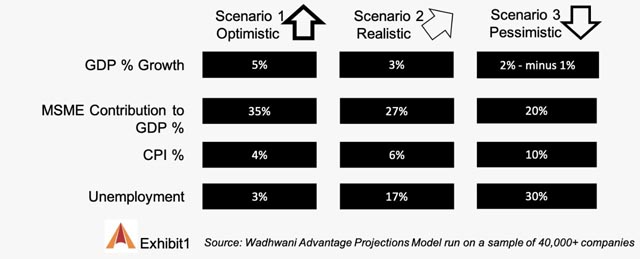MSMEs must commit to these 18 guideposts of action to survive regardless of post-COVID predictions

Business Development
253 week ago — 5 min read
Ease of doing business for MSMEs: The COVID-19 pandemic has thrown the world economy into chaos and it isn’t surprising that the small businesses are facing the brunt of this economic shock. This economic crisis is slated to have deep, indelible and perhaps, an irreversible impact on the way trade, commerce, economics, business and philanthropy function today. The international relations are likely to remain disrupted and mired in disagreements and lack of consensus over the next 6-12 months. Aggressive spurts of wrong decisions by governments in recognising who is an ally and who isn’t cannot be discounted. Most pundits have predicted the perils of the punctured economies and have painted dark scenarios on global trade, and some have struck a note of careful optimism only after six months.
In this moment of crisis, there are three important questions that SMEs need to answer. First, what should small businesses do to remain solvent post-COVID-19? Second, what should they do to emerge stronger? Third, and more importantly, what should be the guideposts of actions for small businesses regardless of what predictions say?
I will urge all small business owners in pursuit of a continuous cycle of improvement, by adopting the 18 guideposts of actions. This will determine the difference between their being alive or dead.
We took a shot at making predictions of the scenarios post COVID-19 and also developed a set of sector-agnostic action plans that the small businesses must adopt to emerge solvent and stronger post-COVID-19, regardless of the predictions. We must recognise the fact that, while few businesses have the luxury to predict and put financial resources and the right talent to respond to highly probable scenarios, the small businesses, by and large, do not have this luxury and yet must act with wisdom.
India by 2022
Our estimates suggest a GDP growth of 5 per cent in the best-case scenario and a drop close to minus 1 per cent in the worst-case scenario. Small businesses may contribute between 35 per cent and 20 per cent from the current 29 per cent of the GDP. CPI will hover between 4 per cent and 10 per cent and finally, the unemployment may even rise to 30 per cent in the worst-case scenario.

Below are three potential drivers that may have the biggest impact on the above scenarios:
Debt trap: The infusion of credit, massive issue of debt to MSMEs, may render both MSMEs and banks in deteriorating health, should the capital be deployed only to survive. The investment capital is as critical as survival. Should India ignore it, MSMEs will be in a debt trap, banks will record a high incidence of NPAs, in turn paralysing the Indian ecosystem.
Infrastructure lag: Should the Government be unable to set aside funds to develop the infrastructure to propel growth, as it had set out to be. This has long term implications on the ability to create domestic demand.
Implosion of equality: There is a reasonable probability of internal implosion caused due to changes in income inequality which was already heading to unhealthy skewness. With over 100 million expected to be poor again and the wealth of the wealthy dropping dramatically, we could witness, rise in crime, social upheaval and at worst even protests of the marginal and impoverished or disadvantaged communities. This has an impact on the labor situation in construction, agriculture and even manufacturing sectors. Clearly, India can ill afford it.
What small businesses must do, regardless of predictions
Given these traps and three scenarios that we believe could emerge, what should SMEs do? Give up? Wait and watch? Scurry around and hope? Based on our deep understanding of the small businesses and the situations they find themselves in, we recommend the following sector, size and geography agnostic 18-guideposts of action.

I will urge all small business owners to commit themselves and their teams, with ruthless honesty, in pursuit of a continuous cycle of improvement, some incremental and some disruptive, by adopting the 18 guideposts of actions. This will determine the difference between their being alive or dead. We do not think that all could be exercised at once. We also do not think that current constraints will prevent small businesses to exercise the guideposts. We recommend that small businesses make a beginning, howsoever small without being dismayed by the dark predictions. After all, the mile-long journey begins with a small step. And that step has the power to change their fate.
Article source: Financial Express
Image source: freepik.com
To explore business opportunities, link with me by clicking on the 'Invite' button on my eBiz Card.
Disclaimer: The views and opinions expressed in this article are those of the author and do not necessarily reflect the views, official policy or position of GlobalLinker.
Posted by
Samir Sharad SatheHead Advantage Program in India, focused on helping small business owners accelerate their growth
View Samir 's profile
Other articles written by Samir Sathe
Most read this week











Comments
Share this content
Please login or Register to join the discussion